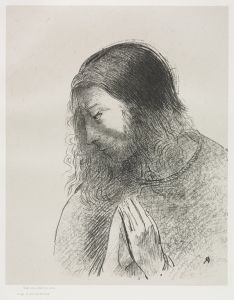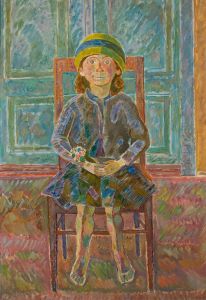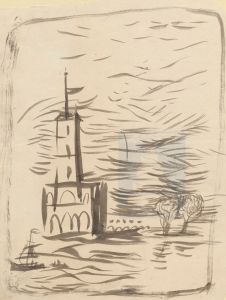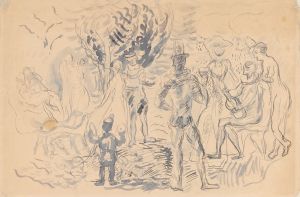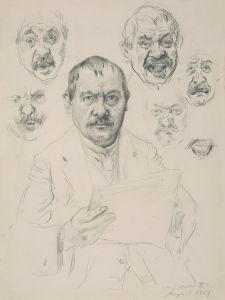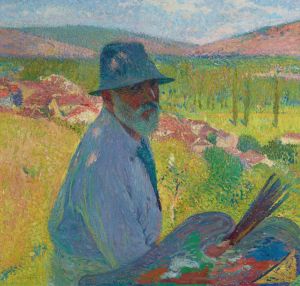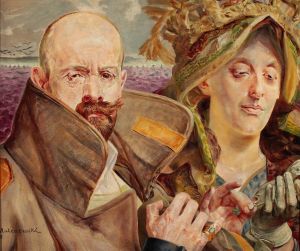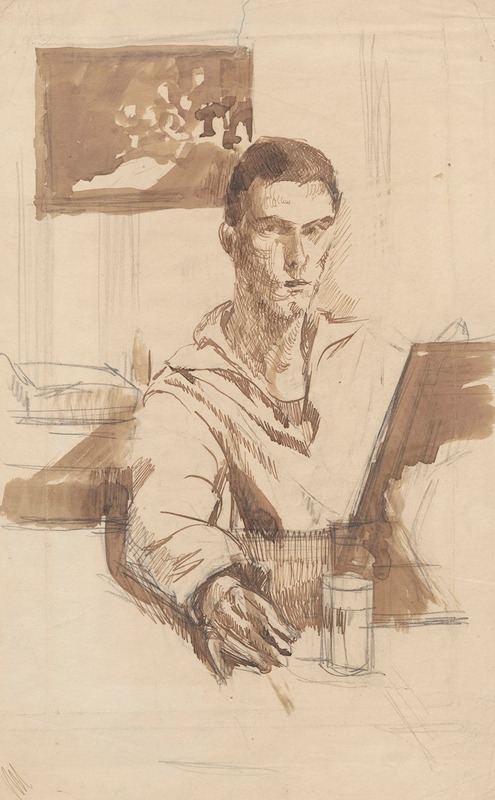
Self-portrait
A hand-painted replica of Zygmunt Waliszewski’s masterpiece Self-portrait, meticulously crafted by professional artists to capture the true essence of the original. Each piece is created with museum-quality canvas and rare mineral pigments, carefully painted by experienced artists with delicate brushstrokes and rich, layered colors to perfectly recreate the texture of the original artwork. Unlike machine-printed reproductions, this hand-painted version brings the painting to life, infused with the artist’s emotions and skill in every stroke. Whether for personal collection or home decoration, it instantly elevates the artistic atmosphere of any space.
Zygmunt Waliszewski was a Polish painter known for his vibrant and expressive works, which often drew inspiration from the Post-Impressionist and Fauvist movements. Born on December 1, 1897, in Saint Petersburg, Russia, Waliszewski moved to Poland after World War I and became an influential figure in the Polish art scene during the interwar period. His artistic style is characterized by bold colors, dynamic compositions, and a keen interest in exploring the human condition through portraiture and other genres.
One of Waliszewski's notable works is his self-portrait, which exemplifies his unique approach to painting and his ability to convey emotion and personality through his art. While specific details about the creation date and current location of this self-portrait are not widely documented, it remains an important piece within his body of work, reflecting both his personal style and the broader trends in European art during the early 20th century.
Waliszewski's self-portrait is distinguished by its use of vivid colors and expressive brushwork, elements that are hallmarks of his artistic approach. The painting captures not only the physical likeness of the artist but also offers insight into his psychological state and artistic identity. Through the use of color and form, Waliszewski conveys a sense of introspection and self-awareness, inviting viewers to engage with the emotional depth of the work.
The self-portrait is also significant for its reflection of the broader artistic movements that influenced Waliszewski. His work shows the impact of Post-Impressionism, particularly in its emphasis on color and emotional expression, as well as Fauvism, with its bold, non-naturalistic use of color. These influences are evident in the way Waliszewski uses color to convey mood and character, moving beyond mere representation to explore the subjective experience of the artist.
Throughout his career, Waliszewski was associated with several important art groups and movements in Poland, including the Formists and the Kapists. These groups were instrumental in introducing modernist ideas to Polish art, and Waliszewski's work played a key role in this cultural exchange. His self-portrait, like many of his other works, reflects the dynamic interplay between Polish artistic traditions and the broader European avant-garde.
Zygmunt Waliszewski's contribution to Polish art extends beyond his paintings; he was also an influential teacher and mentor to younger artists. His commitment to exploring new artistic ideas and techniques helped to shape the development of modern art in Poland, and his legacy continues to be celebrated in exhibitions and collections both in Poland and internationally.
In summary, Zygmunt Waliszewski's self-portrait is a testament to his skill as a painter and his engagement with the artistic movements of his time. Through its expressive use of color and form, the painting offers a window into the artist's inner world and his place within the broader context of European modernism. While specific details about the painting's provenance may be limited, its significance within Waliszewski's oeuvre and its contribution to the history of Polish art are undeniable.





